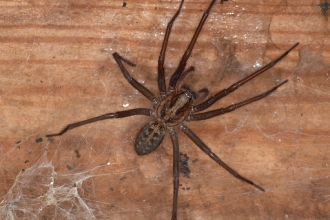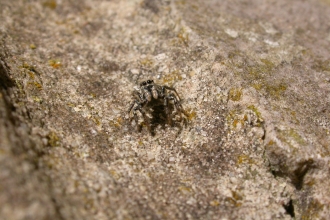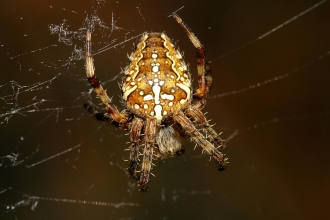For some people, the slightest glimpse of a spider is enough to inspire shrieks of fear. Some newspapers take full advantage of this notoriety, and every autumn there’s a surge of stories about spiders “invading” our homes, usually focusing on the largest species or those (often incorrectly) thought to be dangerous.
The truth is spiders live alongside us all year round and this is something to celebrate, not fear. These amazing animals are a vital part of our ecosystems, feeding on an astounding number of insects. It's estimated that across the world, spiders eat between 400 and 800 million tons of insects and other invertebrates a year. Many of the insects they eat are considered pests of food crops, garden plants and even people, so having spiders around is a great natural alternative to pesticides.
Some spiders have found their perfect home in our houses, hiding away behind furniture and hunting the other invertebrates that find their way inside, from house flies to wasps and mosquitoes. They tend to keep themselves to themselves, preferring dark corners where they can live in peace. But in late summer and early autumn, some spiders become more active as males reach maturity and seek out a female to woo. This is when you usually see large house spiders (Tegenaria species) scouring your home looking for a mate.
The fear of spiders often comes from worries about being bitten, fuelled by urban legends and hyped-up headlines. In reality, very few spiders in the UK are even capable of biting a person, and the small number that can rarely do. So, the next time you spot a spider sheltering in the corner of a room, give it a wave and say keep up the good work!
If you do find a spider in your house, don’t panic and don’t kill it unless you prefer pesky flies of course! Simply put a glass over it and slide a piece of paper beneath it and take it outside. Remember, spiders are harmless and beneficial to the environment, so please treat them humanely. You may never learn to love spiders, but you should definitely learn to live with them.








